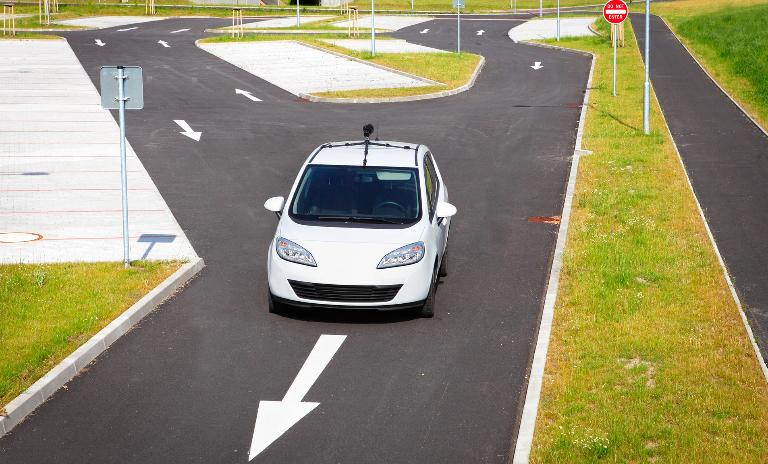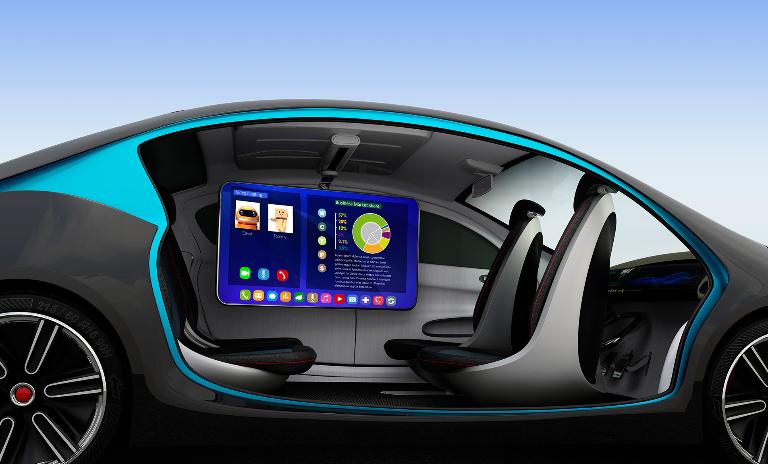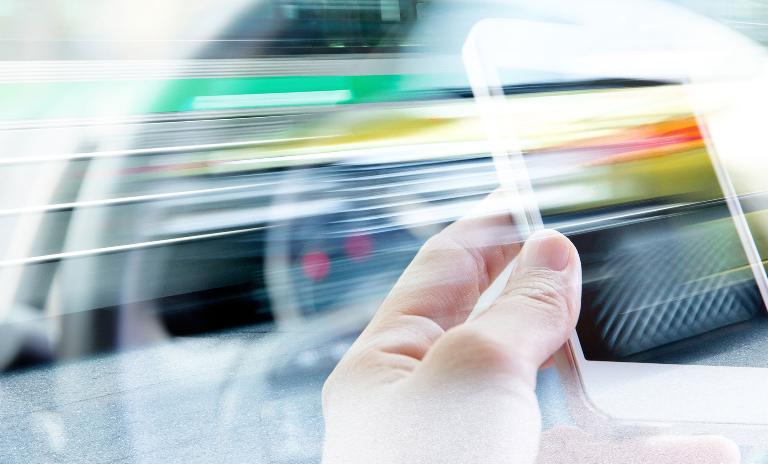

Business Booster
The tidal wave of digitization is sweeping through the automotive industry. Who will come out on top: OEMs or IT companies?
"The share of software in vehicles is on the rise. Will IT giants edge out car makers?"
We have the iPod, the iPhone and the iPad – will we soon have the iCar?
Three times already, we have seen Apple successfully redefine a product category and establish a complete ecosystem around it, guaranteeing its creator a quasi-monopoly. The signs are building that Apple may well be about to attempt to disrupt the automotive industry – with a vehicle that once more sets new standards in design, connectivity and user interface.
Just how realistic is this scenario, which – along with the rumors surrounding Google’s self-driving “bubble car” – is currently causing the entire industry sleepless nights? Is it really conceivable that an industry outsider can drum up sufficient knowledge and resources within the space of a few years – even with the help of a partner – to build and to brand such a complex and prestigious high-tech product as a car? To occupy key links in the value chain and to downgrade established automakers to mere suppliers of hardware?
Let’s take a look at the facts first: The share of software in the automobile is rising all the time. The amount of computing power built into a new car now exceeds that of a regular home computer many times over. New sensor technologies enable the capture and processing of data about the vehicle and its surroundings. There’s no doubt about it, this increasing digitization of motor vehicles is going to facilitate completely new business models in the medium term.
The connectivity of production, the product and its environment holds enormous opportunities for the automotive industry – way beyond the immediate impact on the vehicle itself. Large numbers of use cases are emerging where data is being turned into exploitable knowledge and new revenues.

Automatically transmitted data helps to cut out unnecessary extra costs
In the first instance, the R&D and production process itself will be different. With usage data transmitted automatically from connected vehicles to OEMs, manufacturers will be able to optimize product attributes in the development phase, thereby cutting out unnecessary extra costs for functionalities customers don’t even use (or don’t use much). In production, advanced manufacturing methods see to it that man and machine already work hand in hand.
Harald Krüger, Chief Production Officer and CEO-designate at BMW (editorial remark: This blog post appeared before Krüger’s inauguration as CEO of the BMW Group), described this M2M collaboration in an interview with the Roland Berger publication COO Insights: “At BMW, a lot of information is exchanged between the vehicle as it goes through the production processes and the machinery – all the quality, process and environmental data that is generated here and can be put to good use.”
According to Krüger, a BMW vehicle now knows its exact features and characteristics as soon as it gets onto the production line – what model it will be, what color it will have, what extras will be fitted. But the possibilities extend much further, all the way up to the ability to completely control any workpiece using intelligent sensors in a connected production setup.
The biggest risks for the auto industry come from autonomous driving
Even the final links in the value chain, sales and after-sales, will not retain their current form. Vehicle sales are increasingly shifting to direct channels, with brick-and-mortar dealerships coming under intense pressure. Tesla, for instance, sells its cars exclusively online in China. German OEMs, too, are experimenting with Net-based direct sales models. If cars end up being ordered directly over the Internet, the traditional car dealer will be relegated the role of agent or delivery man.
That digitization is creating brand new business models is reflected in the growing emergence of (complementary) mobility services like car sharing being offered by traditional OEMs. In doing so, OEMs are serving the customer trend toward shared usage rather than ownership without overly cannibalizing their own business model as vehicle sellers. In 2030, as much as five to ten percent of all vehicles sold in Germany are expected to be used in car sharing or similar business models.
But probably the biggest risks or opportunities – depending on your point of view – for the automotive industry will come from autonomous driving and the digital customer interface.
One-time investments can only pay off with high production quantities
Autonomous driving has the potential to shake the automotive industry to its very foundations. The question is no longer whether we will see highly automated vehicles on our roads, but when – and how that development will end up affecting the automotive industry as a whole, and indeed society at large. After all, this form of getting around reduces individual mobility to a transportation service and facilitates the introduction of brand new billing models in the automotive sector, like pay-per-use.
Whereas the subsystems and components necessary for highly automated driving are already mature technologies, the development of the required software and matching decision algorithms is still in its infancy. The one-time investment can only pay off with high production quantities. And then the autonomous vehicle not only needs to work, it also needs to feature intuitive controls. As star designer Hartmut Esslinger puts it, “We need an interface that rethinks and repositions the steering wheel, the buttons and the switches. An interior suited to a generation that has grown up with Apple and Google.” Companies operating in the digital economy may well be more adept at designing that kind of intuitive controls – and at clarifying the kind of legal questions that arise here, like liability issues.

The great impact of intermodal mobility management
The changes at the customer interface possess similarly large potential for disruption. Ownership of the vital data emerging from vehicle use will become a crucial competitive advantage throughout the whole of the industry. For example, only companies that own this data can make the vehicle robotics “learn” from it and can develop detailed, permanently updated digital maps of a car’s surroundings.
The subject of data ownership will not least determine who draws the most benefit from the Open Automotive Alliance (OAA), which almost all of the big OEMs have signed up to. A cooperation with Google, the alliance aims to establish Android as the operating system for vehicles. But OEMs will only be able to keep control of the relevant knowledge if all of the data goes through their own servers. The question is, whether doing so will enable them maintain (exclusive) access to their customers long term or whether they’re more likely to lose it – and what the potential consequences might be.
With this broad basis of data, mobility services may well be able to feature much more integrated models in the future. If all that was needed was to get from A to B in the best way possible, a mobility manager could offer customers a combined booking and payment solution; the transportation service for the individual journey segments would become an exchangeable commodity and the driving would become just one of several modes of transportation.
As soon as a player who can offer that enters the marketplace, that same player will define what the mobility value chain is going to look like in the future. This model of intermodal mobility management is likely to have a particularly great impact on an automotive industry with increasingly self-driving vehicles.

The battle for control of the value chain is still anyone's game
More than anything, the speed of the digital transformation will be determined by how the rules of the game shape up in the industry and the level of permanence they have in the face of new offerings coming in.
OEMs have their knowledge of the vehicle bodywork, chassis, powertrain and safety aspects on their side, along with their established customer relationships and their holistic understanding of the automobile as a system. What IT companies have in their favor is their data expertise, their system integration capabilities and their experience in overcoming legal obstacles.
That being the case, OEMs would do well not to rest on the laurels of the head start they currently (still) enjoy. One bit of good news, at least, is that there’s been speculation about an Apple TV for years, and we still haven’t seen one of those. But to rely on the same thing happening with the iCar, that’s a mistake nobody should make.
Photo Credits: narvikk / iStockphoto; Chesky_W / iStockphoto; ponsulak / iStockphoto

